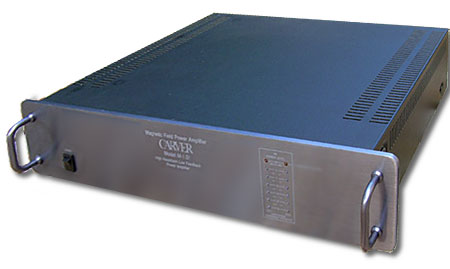Bob from Florida
Major Contributor
- Joined
- Aug 20, 2020
- Messages
- 1,286
- Likes
- 1,180
I looked up the operators manual and the bias instructions call for an optimum bias of 80 milliamps. This is the total for all 6 tubes - 13.33 milliamps each tube at 720 plate volts with 360 screen grid volts. Bias percentage is 16 % - clearly class B Pentode operation. The low screen voltage combined with low bias should make the output tubes last. The Class B operation accounts for the high peak power and the crossover distortion perhaps has some responsibility for the measured distortion. Should play very dynamically - especially with 8 ohm speakers without dips in impedance.


